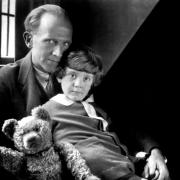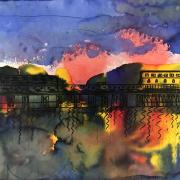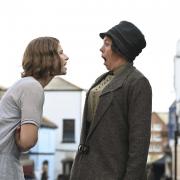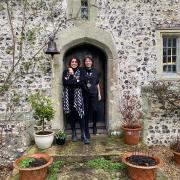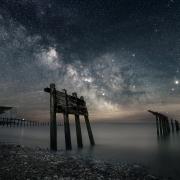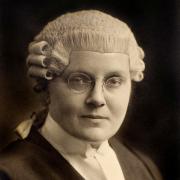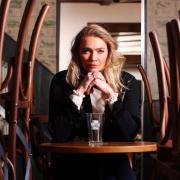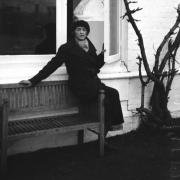In the inter-war period modernism questioned the status quo across art and literature. Dr Hope Wolf, curator of an exhibition focusing on Sussex modernism, speaks to Duncan Hall

From Eric Gill’s crafts in Ditchling to the Bloomsbury Group centred around Charleston farmhouse, Sussex’s contribution to early 20th century culture has long been acknowledged.
But until now no show had brought all the artistic movements going on in the county together into one space. Sussex Modernism: Retreat and Rebellion, exploring the art movement between 1910 and 1950 has been curated by Dr Hope Wolf, lecturer in British Modernist Literature at the University of Sussex and co-founder of the university’s Centre for Modernist Studies.
“We started talking to museums and galleries which have amazing modernist collections,” she says. “The idea was to put on an exhibition which would showcase their collections and create a narrative, as well as to think about what the modernists were doing here in the first place.”
Hope has worked with Charleston Farmhouse, near Lewes; Farley Farm House in Chiddingly; West Dean; and Bexhill’s De La Warr Pavilion to put together the exhibition. She has drawn on the collections at Brighton Museum and Art Gallery; Ditchling Museum of Art and Craft; Hastings’ Jerwood Gallery; Pallant House Gallery in Chichester; and Towner in Eastbourne. The list of modernist artists and writers who had connections with Sussex at key moments of their lives is breath-taking. There are the much-trumpeted names, such as Eric Gill and David Jones at Ditchling, Virginia and Leonard Woolf, Vanessa Bell and Duncan Grant, part of the Bloomsbury Group, who lived close to each other in Rodmell and Charleston, and surrealists Roland Penrose and Lee Miller in Farley Farm. But many other great writers and artists had strong links too, such as poets WB Yeats and Ezra Pound in Stone Cross, artists Jacob Epstein and Edward Burra in Hastings, author DH Lawrence in Greatham, painter Eric Ravilious in Eastbourne and early modernist writer Henry James in Lamb House, Rye.
“They were trying to rethink how one should make artworks and pushing the limits of what art can do, but at the same time engaging in social conventions,” says Hope. Modernism came at a very uncertain time in society – Nietzsche had declared God dead, the idea of Western progress and civilisation had been smashed by war, there was political revolution in Russia and Spain, as well as the growth of fascism in Germany and Italy. And the feminist movement was also in the ascendant with Virginia Woolf’s A Room Of One’s Own a key text. “It’s an exciting time for some and a very anxious time,” says Hope.
The exhibition is chronological, taking in paintings, literature, sculpture, film, furniture and architecture, allowing the story of each movement and artist to be told as they moved into the county. “There are lots of reasons why writers and artists moved down here,” she says. “Duncan Grant came to Sussex because as a pacifist he had to work on the land. Eric Gill and David Jones were trying to escape industry and factory life. There were lots of commissioning projects in the 1930s, with émigré artists [from Nazi-occupied countries] making modernist architecture. The most liberal patrons were in Sussex who worked with the modernists. And there was quite a lot of nostalgia – childhood memories of being in Sussex which led people like Roland Penrose to come back later in life. Only a few – such as Edward Burra – stayed in Sussex all their lives.”
The influence of the South Downs can be seen in some of the pieces in the exhibition. The landscape behind David Jones’ Madonna and Child is closer to the Downs than Biblical Jerusalem. And Duncan Grant’s Venus and Adonis are lying in a scene more reminiscent of the countryside around Lewes than Mount Olympus. Some images are even more explicit, such as Lee Miller’s photograph of Saul Steinberg finishing off the Long Man of Wilmington in a surreal play on perspective.

“The Long Man of Wilmington was a major draw for a lot of modernists,” says Hope. “In the Sussex landscape they could see remnants of the past integrated in the present – the past and present were existing simultaneously. Lee Miller in particular became interested in paganism and alternative practices.”
Some of the modernists found themselves looking backwards – from Eric Gill taking inspiration from pre-industrial craft to Ezra Pound experimenting with medieval and Chinese poetry. “Some go back and look forward at the same time,” says Hope, pointing to the fact the De La Warr Pavilion was originally designed to have a statue of the Greek goddess of the underworld and springtime Persephone outside the building. “The modernists were taking the past and making it new. They all had interesting attitudes to the past and how it should be used. They were constantly trying out different ways of expressing what was going on. Charleston was like a proto-think tank.”
The coast was also a major inspiration – as can be seen with John Piper’s Beach and Star Fish, Seven Sisters Cliff, Eastbourne, or Edward Wadsworth’s Light Selections from 1940. “A lot of modernists when working on or painting pictures were inspired by the coast as a threshold, a liminal space between Britain and Europe,” says Hope. “For those who were émigrés the coast was really important, it was about their inbetween-ness. The history of invasion has been imprinted on the coastal landscape from different historical periods in Sussex.”
The past war and the coming conflict with Hitler’s Nazis was also important. In her diary Virginia Woolf described hearing the guns in France during her walks across the Downs during World War I. That experience was shared in 1940 by artist Edward Wadsworth while he was painting Bronze Ballet in Maresfield. As he worked on his surreal take on twisted boat propellers pictured in Le Havre harbour he could hear the bombardment of French ports by the German forces encircling the British at Dunkirk. “Edward Burra painted sinister paintings of the effects of war on Rye,” adds Hope.
When they lived in Sussex the modernist artists didn’t hide away. Their influence can be seen in the artworks commissioned by Bishop Bell in Chichester Cathedral and the murals on Berwick Church, as explored in Sussex Life last month. Not that their contributions to Sussex were always well-received. “When the Bloomsbury Group painted the murals in Berwick Church people got very cross about them,” says Hope. “The head of the jam-making circle took offence to the murals and wrongly accused Quentin Bell of being a conscientious objector.”
There was also controversy about the Jewish-German Erich Mendelsohn and Russian Serge Chermayeff being employed as architects on the Art Deco De La Warr Pavilion on Bexhill seafront. “There was a lot of xenophobic criticism about why British architects weren’t used,” says Hope, who has been investigating some of the local reactions to modernist works. “But in Berwick church the painters used local labourers as models, and the De La Warr was built by Sussex people. Many of the modernists had got interested in socialism – it makes sense that they would want to engage with people.”
She sees crossovers between the different modernist communities living in Sussex. Eric Gill statues were in the gardens of the Bloomsbury Group, with Virginia and Leonard Woolf visiting him in Ditchling. Painter Peggy Angus taught alongside Quentin Bell in a private girls’ school. Duncan Grant went to Farley Farm to meet Lee Miller and Roland Penrose. Bloomsbury art critic Roger Fry even presented the young painter Edward James with a school prize. “The obvious comparison between them all is craft,” says Hope. “In Charleston Vanessa Bell and Duncan Grant made ordinary objects beautiful. In Ditchling Eric Gill and David Jones were making useful objects beautiful. Farley Farm was a surrealist version of Charleston, as was Edward James’ house [Monkton House] in West Dean.” Monkton was home to Salvador Dali’s famous Mae West Lips Sofa, currently in Brighton’s Royal Pavilion and Museums collection.
Hope is expanding her focus on different modernists and makers in the county. “The modernists’ formal experimentation is still going on,” she says. “There were a lot of modernists working into the 1970s and 1980s. And there are still literary and artistic communities which are very strong in Sussex. There’s an amazing poetry scene in Brighton, it is still attracting new architecture with the Towner and Jerwood galleries in a modernist style and there are so many surrealists in Hastings – it still has a reputation for bohemia.”
Find out more
Sussex Modernism: Retreat and Rebellion is at Two Temple Place, London, WC2R 3BD from Saturday 28 January to Sunday 23 April. Open Monday, Thursday to Saturday 10am to 4.30pm, Wednesday 10am to 9pm, Sunday 11am to 4.30pm. Closed Tuesday.
For more visit www.twotempleplace.org.




